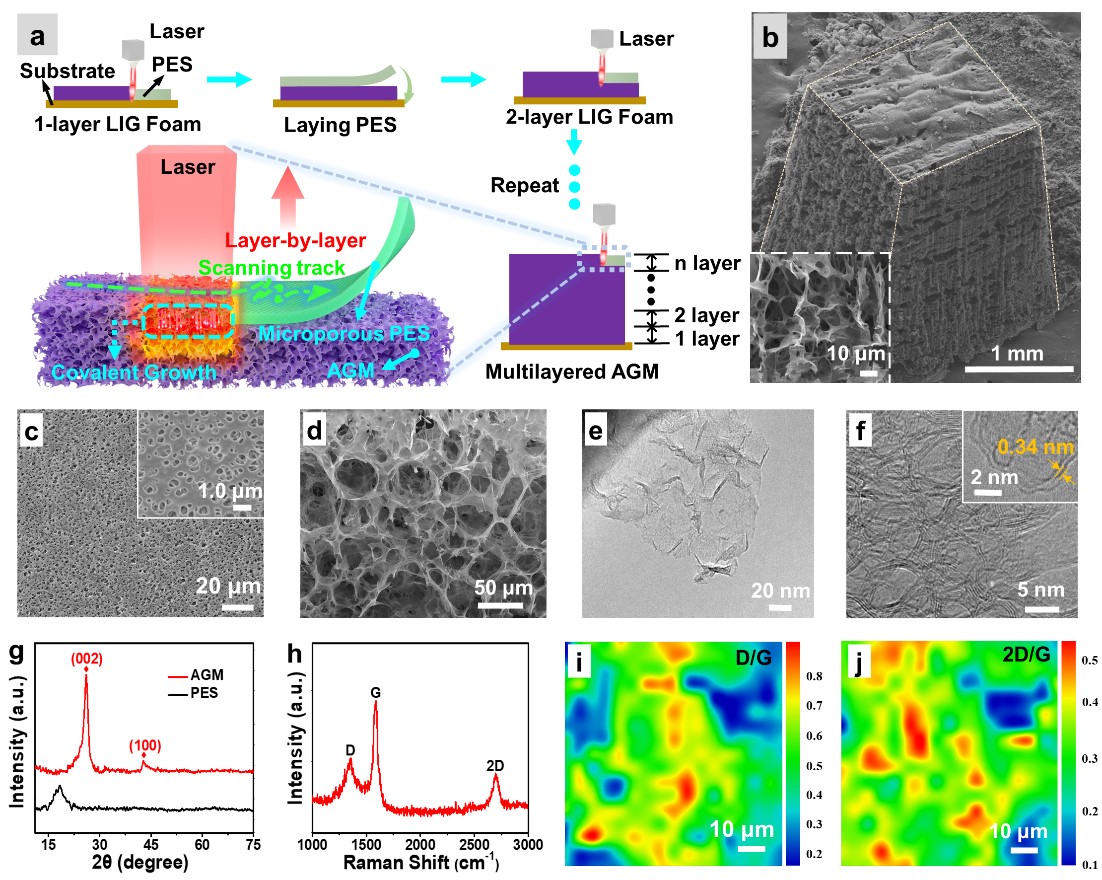
Recently, a research team led by Prof. WANG Zhenyang from Hefei Institutes of Physical Science (HFIPS), Chinese Academy of Sciences (CAS) developed a laser-assisted layer-by-layer covalent growth method to prepare highly crystalline All graphene macrostructures (AGMs).
Related research results were published in Advanced Functional Materials.
Graphene is a two-dimensional carbon material known for its exceptional mechanical, electrical, thermal, and optical properties. To facilitate its large-scale applications, it is crucial to efficiently prepare and assemble graphene at the macroscopic level.
However, conventional methods such as liquid phase self-assembly, 3D printing, and catalytic template techniques can only achieve non-covalent weak interactions between graphene sheets, resulting in discontinuities in the crystal structure. This limitation hampers electrical properties of graphene macrostructures.
In this study, a covalently interconnected AGM with micro-to-macro scalable electrical properties was prepared by lamination of microporous polyethersulfone (PES) membrane. Each stack layer of PES membrane was completely carbonized and seamless inter-layer boding was achieved in air environment using laser.
Through molecular dynamics simulation, the researchers further revealed the covalent growth mechanism of AGM. Compared to non-covalent assembly, this approach achieved a 100-fold increase in cross-layer conductivity.
The effectiveness of AGMs has been demonstrated in applications such as supercapacitor electrodes. The covalent growth technique for AGMs holds fundamental importance not only in energy storage but also in other fields like electronics, electromagnetic shielding, and sensors, where efficient and high-quality methods for preparing macroscopic graphene are essential.

Layer-by-layer covalent growth and the characterization of AGMs. (Image by LI Nian)